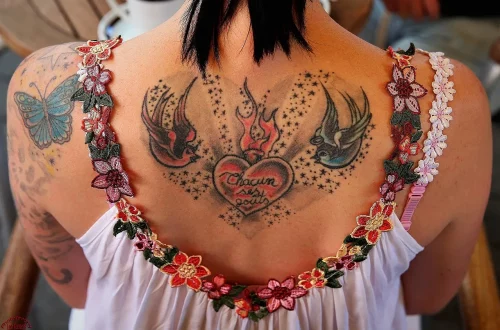
Understanding Different Body Types and Their Unique Features
Understanding our body types is crucial in a world where health, fitness, and self-image play significant roles in our daily lives. Each individual possesses a unique body composition, which can affect how we approach diet, exercise, and overall wellness. These different body types are often referred to in various terms, such as ectomorph, mesomorph, and endomorph, each presenting its own set of characteristics and challenges.
Understanding these distinctions allows us to tailor our fitness routines and nutritional plans to better suit our needs, enhancing our physical well-being and self-esteem. Moreover, embracing our natural body type can help us cultivate a more positive relationship with our bodies, reducing the pressure of conforming to societal beauty standards. It is essential to remember that there is no “ideal” body type; we all come in different shapes and sizes, and each has its advantages and disadvantages.
As we delve deeper into the nuances of body types, we will uncover the unique features that define each one. This knowledge will empower individuals to make informed decisions regarding their lifestyle choices, fostering a sense of acceptance and appreciation for their bodies.
Ectomorph: The Lean and Long Physique
Ectomorphs are typically characterized by their slender build, narrow shoulders, and minimal body fat. Individuals with this body type often find it challenging to gain weight, whether from muscle or fat. This characteristic can be both a blessing and a curse, as they may enjoy a faster metabolism, allowing them to eat more without the worry of excess weight.
However, the struggle to gain muscle mass can be frustrating for ectomorphs, particularly those interested in bodybuilding or strength training. To counteract this, ectomorphs should focus on a diet rich in calories and protein. Incorporating nutrient-dense foods such as lean meats, nuts, and whole grains can help them achieve their desired weight and muscle gain.
When it comes to exercise, ectomorphs may benefit from strength training routines that emphasize heavy weights and lower repetitions. Compound movements like squats, deadlifts, and bench presses can help stimulate muscle growth effectively. Additionally, it’s advisable for ectomorphs to limit excessive cardio, as this can further hinder their ability to gain weight and muscle.
Socially, ectomorphs might face misconceptions about their body type. People may assume they are the epitome of health simply because they are slim. However, this can lead to unrealistic expectations and pressure to maintain that physique. Understanding the unique challenges faced by ectomorphs can cultivate empathy and support within communities that value diverse body types.
Mesomorph: The Athletic Build
Mesomorphs are often regarded as the ideal body type due to their naturally muscular physique, broad shoulders, and narrow waist. This body type finds it relatively easy to gain muscle and lose fat, making them well-suited for various athletic pursuits. Mesomorphs tend to have a more balanced metabolism, which allows them to enjoy a wider range of foods without significant weight fluctuations.
To maintain their physique, mesomorphs should focus on a balanced diet that includes adequate protein, healthy fats, and carbohydrates. Incorporating a variety of fruits and vegetables is also essential for overall health. Since they respond well to exercise, mesomorphs can benefit from diverse workout routines, including strength training, cardio, and flexibility exercises.
Strength training is particularly effective for mesomorphs, as they can increase muscle mass quickly. They should focus on both compound movements and isolation exercises to achieve well-rounded strength. Additionally, mixing in high-intensity interval training (HIIT) can promote fat loss while maintaining muscle mass, allowing mesomorphs to remain lean and defined.
Despite their advantages, mesomorphs may face the challenge of complacency. Because they often achieve their fitness goals more easily than other body types, they might not feel the same urgency to maintain their routines. This can lead to weight gain if they become sedentary. Developing a consistent fitness regime is crucial for mesomorphs to sustain their athletic build and overall health.
Endomorph: The Curvier Body Type
Endomorphs are typically characterized by their rounder physique, wider hips, and a propensity to store body fat more easily than the other body types. This body type often has a softer appearance and may find it more challenging to lose weight, which can lead to frustration for those hoping to achieve a leaner look.
For endomorphs, a strategic approach to diet and exercise is essential. A lower carbohydrate diet combined with higher protein and healthy fats can help manage weight effectively. Incorporating plenty of vegetables and whole foods into their daily meals can also aid in maintaining a healthy weight while providing necessary nutrients.
In terms of exercise, endomorphs should focus on both strength training and cardiovascular workouts. Strength training can help build muscle and boost metabolism, while cardio workouts can assist in burning calories and reducing body fat. High-intensity interval training (HIIT) is particularly effective for endomorphs, as it can maximize fat loss in a shorter period.
Endomorphs might also experience societal biases regarding their body type, facing stereotypes about health and fitness. Understanding the unique challenges they face is crucial for fostering a supportive environment that values all body types. Celebrating the diversity of body shapes and sizes can empower endomorphs to embrace their natural physique and pursue health in ways that work for them.
Finding Balance and Acceptance
Ultimately, understanding different body types is not about labeling ourselves but rather about fostering self-acceptance and promoting a balanced lifestyle. Each body type has its unique features, strengths, and weaknesses, and recognizing these can help individuals make informed decisions regarding their health and fitness.
It’s important to remember that fitness is a personal journey, and what works for one individual may not work for another. Embracing our body type can lead to healthier choices and improved self-esteem. Rather than striving for an idealized version of health, individuals should focus on nurturing their bodies through balanced nutrition, effective exercise routines, and positive self-talk.
Moreover, cultivating a supportive community that values diversity can significantly impact our perception of body image. Encouraging open discussions about body types can help reduce stigma and promote inclusivity. Celebrating our differences not only empowers individuals but also fosters a culture of acceptance and appreciation for all bodies.
In conclusion, the journey toward understanding and embracing our body types is a vital aspect of our overall well-being. By recognizing our unique features, we can create healthier habits that cater to our needs, fostering a positive relationship with our bodies.
*Please note that this article is not intended as medical advice. For any health-related concerns or conditions, please consult with a qualified healthcare professional.*




